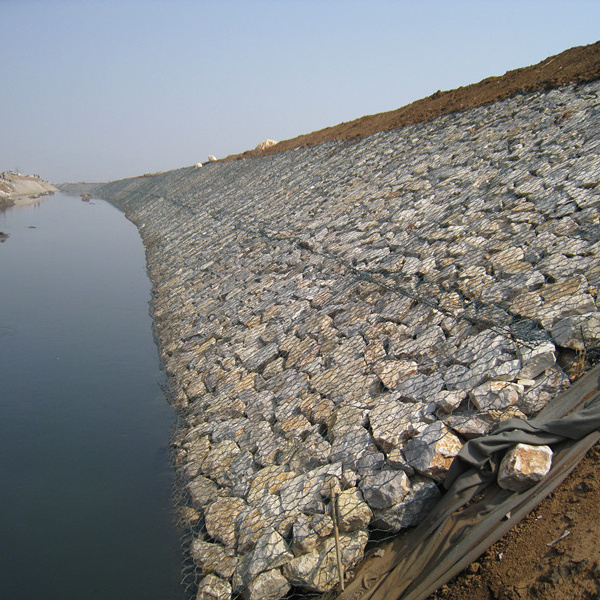Dec . 26, 2024 03:06 Back to list
Maximum Height Specifications for Gabion Wall Manufacturers and Design Considerations
Understanding Gabion Wall Maximum Height Insights from Leading Manufacturers
Gabion walls have emerged as a popular solution in civil engineering and landscaping due to their durability, versatility, and aesthetic appeal. These walls, constructed from wire mesh filled with stones or other materials, serve various purposes, including erosion control, retaining walls, and decorative features. While gabion walls are often praised for their adaptability, one crucial aspect to consider during their design and construction is the maximum height they can achieve. In this article, we will explore the factors influencing the maximum height of gabion walls, drawing insights from leading manufacturers in the industry.
What Are Gabion Walls?
Gabion walls are essentially structures made of cages or containers filled with rocks, stones, or other materials. They are used primarily for stabilization and erosion control in various applications, from landscaping projects to large-scale civil engineering solutions. The appeal of gabion walls stems from their natural look and ability to blend seamlessly into the environment while providing effective support and strength.
Factors Affecting Maximum Height
1. Material Quality The materials used in constructing gabion walls significantly affect their structural integrity and height. High-quality, corrosion-resistant wire mesh and well-graded stone fill are essential for maintaining strength and durability, especially under varying weather conditions. Leading manufacturers emphasize using materials that meet the required standards for strength and resistance to environmental factors.
2. Design Standards The design of gabion walls must adhere to local engineering codes and regulations. Many manufacturers provide guidelines and specifications based on industry standards, ensuring that walls are constructed safely and effectively. These design standards indicate the height limits based on soil conditions, wall thickness, and the type of fill material used.
3. Soil Conditions The type of soil on which the gabion wall is constructed plays a significant role in determining its maximum height. Loose, sandy, or highly saturated soils may not provide adequate support for taller walls, while dense, stable soils can support greater heights. Manufacturers often assess site conditions and recommend appropriate wall heights accordingly.
gabion wall maximum height manufacturers

4. Water Management Gabion walls are porous by nature, allowing water to flow through them. However, improper drainage and water management can lead to pressure build-up, potentially compromising wall stability. Leading manufacturers suggest incorporating proper drainage features, such as weep holes or drainage mats, to mitigate these risks, particularly for taller walls.
Recommended Maximum Heights
While there is no universal maximum height for gabion walls, many manufacturers provide general guidelines based on their experiences. Typically, gabion walls can range from 3 to 10 feet in height without significant engineering intervention. However, for walls exceeding this height, it becomes essential to engage with structural engineers and consider additional design features, such as reinforced geogrid systems or terracing.
Some manufacturers have successfully built gabion walls up to 20 feet or more, but these projects often involve complex engineering assessments and specialized design techniques. Collaborating with experienced professionals ensures safety and compliance with local regulations.
Conclusion
Gabion walls are an effective and aesthetically pleasing solution for various construction and landscaping needs. Understanding the factors influencing the maximum height of these walls is crucial for successful implementation. By considering material quality, design standards, soil conditions, and water management techniques, one can build strong and durable gabion walls that meet specific project requirements.
Leading manufacturers in the industry play a vital role in providing the necessary resources, guidelines, and support for gabion wall construction. Engaging with these manufacturers during the planning and design phases can significantly enhance the quality and longevity of gabion structures. Ultimately, by focusing on the right practices and technical insights, builders can harness the full potential of gabion walls, ensuring safety, functionality, and aesthetic appeal in their projects.
-
hesco-gabion-baskets-for-coastal-erosion-prevention
NewsAug.22,2025
-
longevity-and-durability-of-river-rock-gabion-walls
NewsAug.22,2025
-
how-to-integrate-gabion-3d-walls-in-urban-planning
NewsAug.22,2025
-
reno-mattress-gabion-applications-in-civil-engineering
NewsAug.22,2025
-
how-to-install-wire-mesh-for-gabion-baskets-properly
NewsAug.22,2025
-
best-materials-for-filling-a-chain-link-gabion
NewsAug.22,2025
-
Wire Mesh Thickness Impact on Gabion Wall Load Bearing
NewsAug.12,2025






